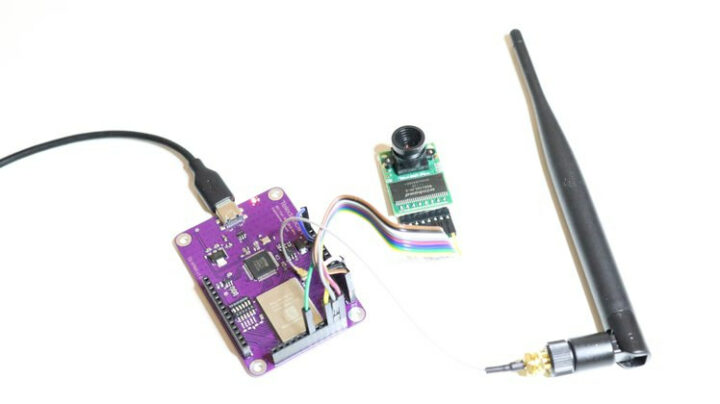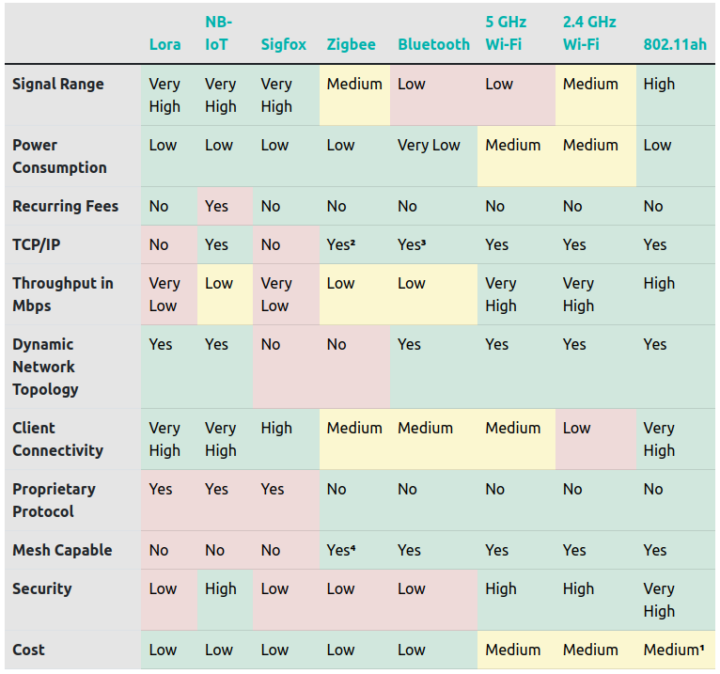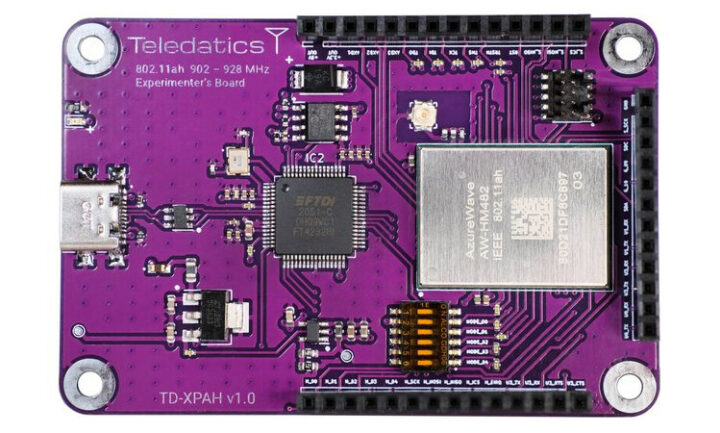When 802.11.ah WiFi operating in the 900 MHz frequency range for low-power long-range communication was announced in 2014, then named WiFi HaLow in 2016, I naively assumed it would soon compete against other LPWAN standards like LoRaWAN or Sigfox.
However, over the next few years, we did not see much interest in the wireless standard. But it may be picking up now, as Gateworks recently announced a Newracom NRC7292 based 802.11ah WiFi HaLow Mini PCIe module for their Arm Linux SBC’s, and a company called TELEDATICS has now introduced the Halo TD-XPAH 802.11ah Hallow development board featuring an AzureWave AW-HM482 module.
Halo TD-XPAH board specifications:
- 802.11ah WiFi HaLow connectivity
- AzureWave AW-HM482 module based on Newracom NRC7292 Cortex-M3/M0 SoC with 752KB RAM, 2MB flash
- Compliant with IEEE 802.11ah WiFi HaLow operating in 902.0 ~ 928.0 MHz range
- Up to 15 Mbps data rate
- Up to at least 1km range, but can be extended further
- Client and Access point (up to 370+ clients) modes
- USB – 1x USB Type-C port for power & communications
- Expansion – 3x headers with up to 4x I2C, 2x SPI, 4x UART, 8x PWM, 4x 9-bit ADC, 32x GPIO
- Timer – 6x high precision timers, 3x watchdog timers
- Debugging – 10-pin JTAG Arm interface
- Misc – RTC, temperature sensor
The board can be used as a standalone device, or as a USB device. The company provides both the firmware/SDK (nrc7292_sdk) and Linux drivers (nrc7292_sw_pkg) on Github, as well as a KiCAD 6.x template to create your own expansion board.

While WiFi HaLow is another LPWAN standard, the higher bitrate enables different applications than LoRaWAN, albeit at the cost of range, battery life, and actual costs. The potential use cases include long-distance wireless camera systems, distributed air quality sensor systems, remote solar field monitor networks, long-range airborne drone links, wide area soil moisture & plant health reporting networks, RS485 wireless communications drop-in replacement for copper wiring, emergency communications platform, and more.

HaLo TD-XPAH WiFi HaLow development board and hAT expansion boards have just launched on Crowd Supply. The development board itself goes for $99, fur the company also offers a $29 air quality sensor hAT (temperature, humidity, air quality), a $49 WiFi gateway hAT with a 2.4 GHz 802.11n radio, and an Ethernet hAT also for $49. Shipping is free to the US but adds $8 to the rest of the world. Delivery of the hAT expansion boards is expected to start by mid-May, while the development board should be ready around three weeks later (first week of June 2022). That’s indeed significantly more expensive than LoRa and NB-IoT hardware, but at least there’s no need for a relatively expensive gateway since the board can act as one, and the higher bitrate may make it suitable where other competing LPWAN standards are not.
[Update: Initially published on December 20, 2021, the post was updated on March 2022 with the launch of the Crowd Supply campaign]

Jean-Luc started CNX Software in 2010 as a part-time endeavor, before quitting his job as a software engineering manager, and starting to write daily news, and reviews full time later in 2011.
Support CNX Software! Donate via cryptocurrencies, become a Patron on Patreon, or purchase goods on Amazon or Aliexpress





